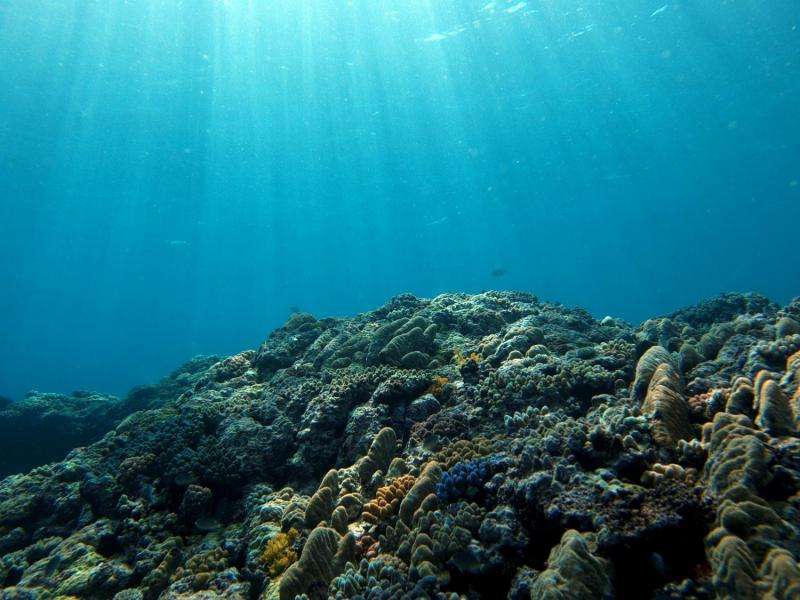Warmer, lower-oxygen oceans will shift marine habitats

Modern mountain climbers typically carry tanks of oxygen to help them reach the summit. It's the combination of physical exertion and lack of oxygen at high altitudes that creates one of the biggest challenges for mountaineers.
University of Washington researchers and collaborators have found that the same principle will apply to marine species under global warming. The warmer water temperatures will speed up the animals' metabolic need for oxygen, as also happens during exercise, but the warmer water will hold less of the oxygen needed to fuel their bodies, similar to what happens at high altitudes.
The study, published June 5 in Science, finds that these changes will act together to push marine animals away from the equator. About two thirds of the respiratory stress due to climate change is caused by warmer temperatures, while the rest is because warmer water holds less dissolved gases.
"If your metabolism goes up, you need more food and you need more oxygen," said lead author Curtis Deutsch, a UW associate professor of oceanography. "This means that aquatic animals could become oxygen-starved in the warmer future, even if oxygen doesn't change. We know that oxygen levels in the ocean are going down now and will decrease more with climate warming."
The study centered on four Atlantic Ocean species whose temperature and oxygen requirements are well known from lab tests: Atlantic cod that live in the open ocean; Atlantic rock crab that live in coastal waters; sharp snout seabream that live in the subtropical Atlantic and Mediterranean; and common eelpout, a bottom-dwelling fish that lives in shallow waters in high northern latitudes.
Deutsch used climate models to see how the projected temperature and oxygen levels by 2100 due to climate change would affect these four species' ability to meet their future energy needs. If current emissions continue, the near-surface ocean is projected to warm by several degrees Celsius by the end of this century. Seawater at that temperature would hold 5-10 percent less oxygen than it does now.
Results show future rock crab habitat would be restricted to shallower water, hugging the more oxygenated surface. For all four species, the equator-ward part of the range would become uninhabitable because peak oxygen demand would become greater than the supply. Viable habitats would shift away from the equator, displacing from 14 percent to 26 percent of the current ranges.
The four animals were chosen because the effects of oxygen and temperature on their metabolism are well known, and because they live in diverse habitats. The authors believe the results are relevant for all marine species that rely on aquatic oxygen for an energy source.
"The Atlantic Ocean is relatively well oxygenated," Deutsch said. "If there's oxygen restriction in the Atlantic Ocean marine habitat, then it should be everywhere."
Climate models predict that the northern Pacific Ocean's relatively low oxygen levels will decline even further, making it the most vulnerable part of the ocean to habitat loss.
"For aquatic animals that are breathing water, warming temperatures create a real problem of limited oxygen supply versus elevated demand," said co-author Raymond Huey, a UW professor of biology who has studied metabolism in land animals and in human mountain climbers.
"This simple metabolic index seems to correlate with the current distributions of marine organisms," he said, "and that means that it gives you the power to predict how range limits are going to shift with warming."
Previously, marine scientists thought about oxygen more in terms of extreme events that could cause regional die-offs of marine animals, also known as dead zones.
"We found that oxygen is also a day-to-day restriction on where species will live, outside of those extreme events," Deutsch said. "Ranges will shift for other reasons, too, but I think the effect we're describing will be part of the mix of what's pushing species around in the future."
More information: Climate change tightens a metabolic constraint on marine habitats, Science, www.sciencemag.org/lookup/doi/ … 1126/science.aaa1605
Journal information: Science
Provided by University of Washington




















